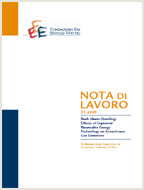Turkish Stream: What Strategy for Europe?

Date
28.05.2015
28.05.2015
Authors
Manfred Hafner (Fondazione Eni Enrico Mattei); Simone Tagliapietra (Fondazione Eni Enrico Mattei)
JEL Code
Q40, Q42, Q48
Q40, Q42, Q48
Keywords:
Turkish Stream, South Stream, Energy Security, Gas Markets, EU Energy Union
Turkish Stream, South Stream, Energy Security, Gas Markets, EU Energy Union
Publisher
Energy: Resources and Markets
Energy: Resources and Markets
Editor
Matteo Manera
Matteo Manera
On December 1, 2014 Russian President Vladimir Putin surprised the energy world by announcing, during a state visit to Turkey, the demise of the long-planned South Stream pipeline project and the launch of a new project to evacuate Russian gas to Turkey and South-East Europe bypassing Ukraine: Turkish Stream. Since 2007 South Stream has represented a key element of the discussions concerning the EU security of gas supply and the overall EU-Russia relations. For this reason, the unexpected demise of South Stream and the quick rise of Turkish Stream need to be carefully evaluated both under the economic and geopolitical perspectives. This paper will first provide an overview of the Russian gas export strategy to Europe in order to entrench the current discussion on the major long-term trends concerning the issue. On the basis of this analysis the paper will then discuss the future prospects of Turkish Stream, arguing that the EU could seize this new reality to launch the formation of a fluid, reliable and interconnected South-Eastern European regional gas hub.
***
Suggested citation: Hafner, M., S. Tagliapietra (2015), ‘Turkish Stream: What Strategy for Europe?’, Nota di Lavoro 50.2015, Milan, Italy: Fondazione Eni Enrico Mattei
